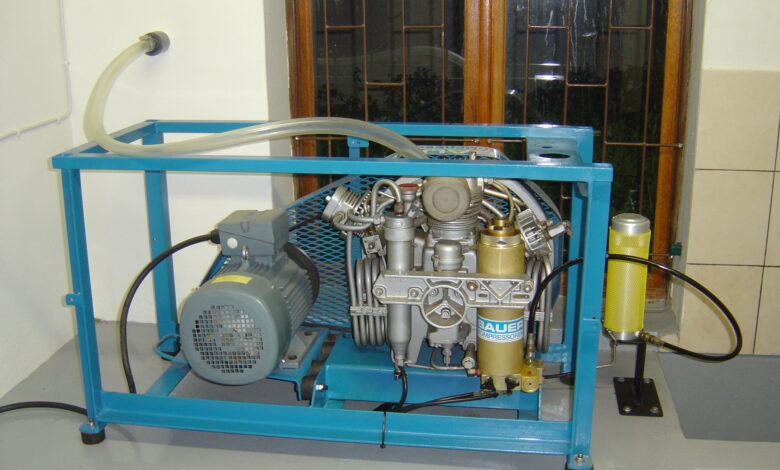How Do I Maintain a Dive Compressor?

Introduction
Dive compressors are essential tools for divers, providing a reliable source of breathable air underwater. Regular maintenance is crucial for ensuring the longevity of the compressor, maintaining air quality, and preventing unexpected malfunctions. This guide covers key maintenance practices to keep your dive compressor in top condition.
Routine Visual Inspections
Check for Leaks and Cracks
Regularly inspect hoses, connections, and seals for any signs of wear, leaks, or damage. Small cracks or leaks can compromise air quality and potentially lead to equipment failure if left unchecked.
Inspect Filters and Valves
Look closely at filters and valves for any signs of clogging or corrosion, which could restrict airflow or reduce efficiency. This inspection helps catch issues early before they impact the compressor’s performance.
Examine Gauges and Controls
Ensure that all gauges, control knobs, and switches are functioning properly. Faulty readings or unresponsive controls can lead to overpressurisation or underperformance, impacting air quality and safety.
Regular Filter Maintenance
Replace Filters as Recommended
Adhering to the manufacturer’s recommended filter replacement schedule is critical. Regular replacement prevents contaminants from entering the air supply, ensuring safe, clean air for diving.
Types of Filters and Their Functions
Different types of filters, such as particulate and activated carbon filters, each play a unique role in air purification. Particulate filters remove dust and debris, while carbon filters eliminate odours and certain chemicals.
Avoid Overusing Filters
Using filters beyond their lifespan can lead to reduced air quality. Overused filters become less effective, allowing contaminants to pass through. Timely filter replacement ensures consistent air purity.
Oil and Lubrication Checks (if applicable)
Monitor Oil Levels
For oil-lubricated compressors, maintaining oil levels within the recommended range is essential. Check the oil level regularly and top up as needed to ensure smooth operation.
Use the Right Type of Oil
Using the correct oil for your dive compressor is crucial. Check the manual for specific oil types to avoid issues that can arise from incompatible lubricants, such as clogging or reduced efficiency.
Change Oil Regularly
Changing the oil at the recommended intervals helps maintain compressor efficiency. Fresh oil reduces wear on internal components, extending the lifespan of the machine and ensuring optimal performance.
Moisture Management and Draining
Drain Moisture from Tanks and Hoses
Dive compressors naturally accumulate moisture, which can lead to rust, bacterial growth, and degraded air quality if not managed properly. Regularly drain moisture from tanks and hoses to keep the system dry and clean.
Use Desiccants if Needed
In moisture-heavy environments, consider using desiccants to reduce water content in the air output. Desiccants help capture excess moisture, providing an additional layer of moisture management.
Belt and Pulley Maintenance (if applicable)
Inspect Belts for Wear
If your compressor is belt-driven, regularly inspect belts for signs of cracking, fraying, or loose tension. Worn belts can reduce compressor efficiency and potentially lead to mechanical failure.
Replace Worn Belts
Timely belt replacement is essential to avoid unexpected breakdowns. Check the manual for replacement intervals and follow them to keep the compressor running smoothly.
Ensure Pulley Alignment
Pulley misalignment can affect belt tension and compressor operation. Ensure pulleys are aligned correctly to minimise wear and maintain efficient performance.
Air Quality Testing and CO Monitoring
Regular Air Quality Checks
Performing regular air quality checks ensures that the compressor delivers safe, contaminant-free air. Periodic testing helps detect any impurities or contaminants, maintaining safety for divers.
Use a CO Monitor
Carbon monoxide (CO) is a serious health risk if present in compressed air. Using a CO monitor alerts you to any CO contamination, providing an additional layer of safety and peace of mind.
Winterising and Long-Term Storage
Clean and Depressurise Before Storage
When storing your compressor during off-seasons, clean and depressurise the system to avoid corrosion or clogging. Properly preparing the compressor for storage preserves its condition for future use.
Store in a Cool, Dry Place
Store your compressor in a cool, dry place away from direct sunlight or excessive moisture. Proper storage conditions prolong the equipment’s life by reducing environmental wear.
Use a Dust Cover
A dust cover helps protect your compressor from dust and debris buildup during storage. Covering it prevents particles from entering critical components, ensuring the system stays clean and ready for its next use.
Parting Words
Maintaining your dive compressor with these regular checks and procedures ensures reliable performance and high-quality air output. By following these maintenance practices, you can keep your compressor in optimal condition, extending its lifespan and safeguarding your diving experience.
Keep an eye for more news & updates on FreshTodayMagazine!
